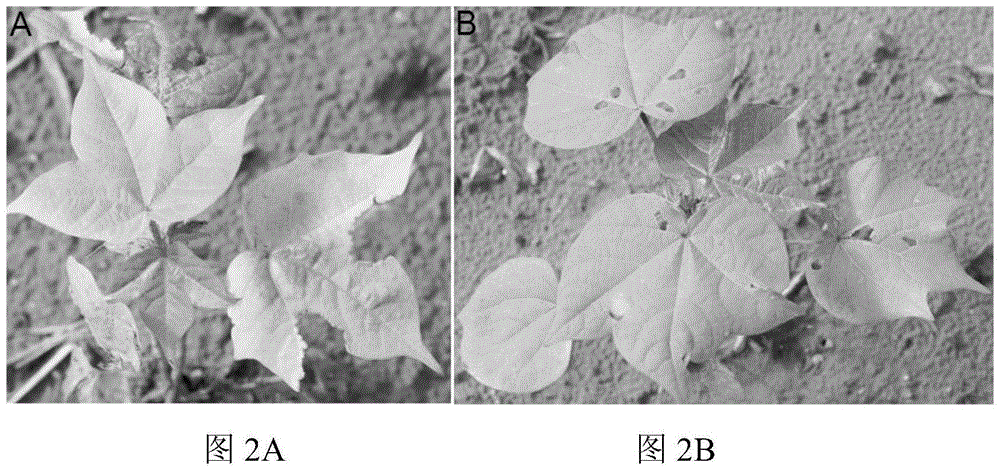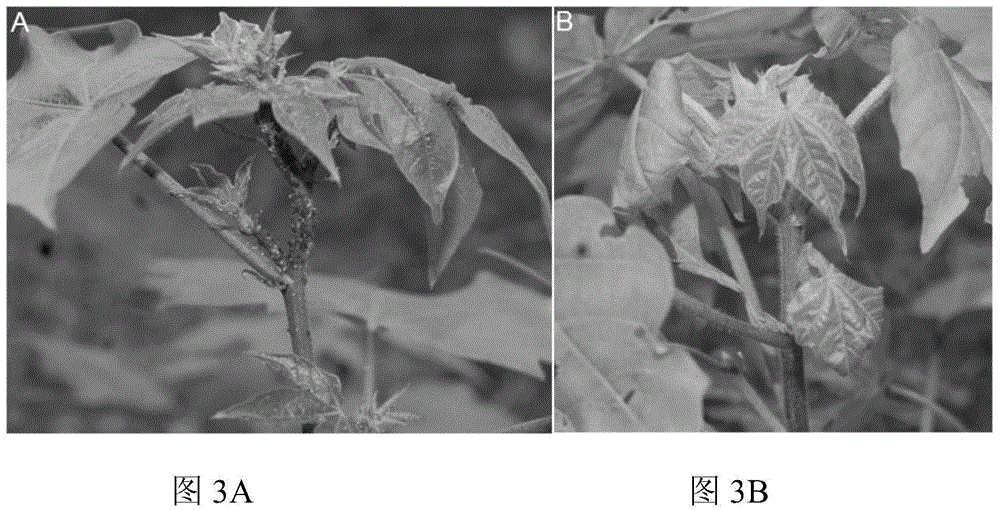Bacillus thuringiensis vegetative insecticidal protein Vip3AfAa and coding gene thereof, and their applications
A technology of Bacillus chrysogenum and insecticidal protein, applied in application, insecticide, genetic engineering, etc., to achieve the effect of high insecticidal activity
- Summary
- Abstract
- Description
- Claims
- Application Information
AI Technical Summary
Problems solved by technology
Method used
Image
Examples
Embodiment 1
[0036] Example 1 Design and synthesis of chimeric genes
[0037] Based on the Vip3Af2 gene and the Vip3Aa1 gene, the chimeric gene Vip3AfAa was designed. The specific steps are as follows:
[0038] (1) Obtain the 1200-base sequence encoding the N-terminal 400 amino acids of the Vip3Af2 protein in the Vip3Af2 gene (GenBank Accession No: DD319822);
[0039] (2) Obtain the 1167 base sequence encoding the 389 amino acids at the C-terminal of the Vip3Aa1 protein in the Vip3Aa1 gene (GenBank Accession No: L48811);
[0040] (3) The two base sequences obtained in the chimeric steps (1) and (2) are obtained to obtain a preliminary modified original base sequence, as shown in SEQ ID No.3, the G+C content of the sequence is only 31.05 %;
[0041] (4) Under the premise of not changing the amino acid sequence, the typical AT-rich sequence and commonly used restriction endonuclease sites existing in the original base sequence that cause instability of plant gene transcripts are replaced w...
Embodiment 2
[0043] Example 2 Expression of chimeric genes
[0044] Utilize the Vip3AfAa chimeric gene expression that embodiment 1 obtains to express Bacillus pluginus vegetative phase insecticidal protein Vip3AfAa, specifically include:
[0045] Construct the Vip3AfAa chimeric gene into the Escherichia coli plasmid expression vector pET28a(+), and transform the Escherichia coli expression host BL21(DE3); inoculate a single colony in 5 ml of LB medium, culture at 37°C overnight, and then press 1:100 Ratio to dilute the culture to OD 600 0.4-0.6, then add IPTG with a final concentration of 1mM to induce expression, and the induction time is 4-6 hours; collect the bacteria by centrifugation, add 20mL sterile water to resuspend, freeze and thaw repeatedly 6 times in liquid nitrogen, and centrifuge to remove the bacteria , to obtain the supernatant.
[0046] The amino acid sequence of Vip3AfAa protein is shown in SEQ ID No.1. The amino acid sequence of the Vip3AfAa protein was compared wit...
Embodiment 3
[0047] Example 3 The insecticidal activity of Vip3AaBb protein
[0048] The supernatant obtained in Example 2 was fed to Lepidoptera insect Spodoptera litura, and the fermentation supernatant of Escherichia coli transformed with pET28a (+) empty vector was used as contrast to detect the killing effect of Vip3AfAa protein on Spodoptera litura. Insect activity, the results are shown in Table 1.
[0049] Table 1 Comparison of insecticidal activity of three samples against Spodoptera litura
[0050]
[0051] It can be seen from Table 1 that the Vip3AfAa protein has significant insecticidal activity against Spodoptera litura. The average mortality of Spodoptera litura after feeding for 24 hours was 86.7%, and the average mortality of Spodoptera litura after feeding for 48 hours was 100%. Spodoptera litura fed the other two samples had lower mortality rates.
PUM
 Login to View More
Login to View More Abstract
Description
Claims
Application Information
 Login to View More
Login to View More - R&D
- Intellectual Property
- Life Sciences
- Materials
- Tech Scout
- Unparalleled Data Quality
- Higher Quality Content
- 60% Fewer Hallucinations
Browse by: Latest US Patents, China's latest patents, Technical Efficacy Thesaurus, Application Domain, Technology Topic, Popular Technical Reports.
© 2025 PatSnap. All rights reserved.Legal|Privacy policy|Modern Slavery Act Transparency Statement|Sitemap|About US| Contact US: help@patsnap.com



